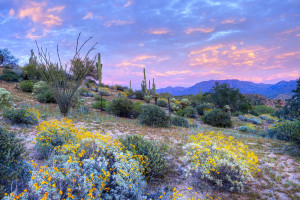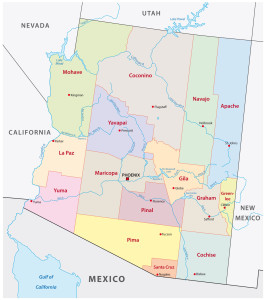Welcome to the World, Willcox AVA!
On September 12, 2016, the TTB announced the establishment of the Willcox American Viticultural Area (AVA). This 526,000-acre area is located in southeastern Arizona within Graham and Cochise Counties. The Willcox AVA is not located within or adjacent to any other viticultural areas.
A range of grapes are grown in the area, with a major nod to Bordeaux and Mediterranean varieties. Some of the stars of the region seem to be Viognier, Tempranillo, and Mourvèdre. There are currently approximately 21 commercial vineyards, 18 wineries, and a total of 454 acres planted to vine (with 650 additional acres planned for the near future) within the Willcox AVA area. The newly-established AVA status will be effective as of October 12, 2016.
Willcox is Arizona’s second AVA. The first, the Sonoita AVA, was established in 1984. Sonoita, located south of Tucson, is just one county over and about a one-hour drive from the Willcox AVA. The Sonoita AVA is unique in that it includes vineyards at elevations of up to 5,000 feet above sea level; these are some of the highest-elevation vineyards in North America.
The new Willcox AVA is a relatively flat area located within a broad, shallow basin surrounded by higher mountains and mountain ranges. These include the Chiricahua Mountains, Dos Cabezas, Pinalenos, Dragoon, Little Dragoon, and Winchester Mountains. Over time, the geologic activity of the region has moved or disrupted many of the streams, creeks, and rivers of the area, creating a “closed basin.” This closed basin is reliant upon rainfall to re-charge its underlying aquifer, as opposed to the area surrounding it which has year-round (or seasonal) creeks and streams.
The soils of the Willcox AVA are mainly alluvial and colluvial and composed of loam made up of nearly equal parts sand, silt, and clay. These loamy soils retain enough water to hydrate the vines while allowing sufficient drainage through to the aquifer. The soils are referred to as the Tubac, Sonoita, Forrest, and Frye soil types, and are not found to a great extent in the area surrounding the AVA.
This area of southeast Arizona is known to have a dry (arid) climate, with the most significant amounts of rainfall typically occurring in July and August. This aridity places stress on the vines during much of the growing season, slowing vegetative growth and adding complexity to the grapes.
Consumers should begin to see wines labeled with the Willcox AVA available within the next two years.
Welcome to the world, Willcox AVA!
- Click here to read the final ruling on the TTB’s official docket.
- For more information: http://www.willcoxrangenews.com/news/article_888e00b6-daea-11e3-9e6b-001a4bcf887a.html
post authored by Jane A. Nickles…your blog administrator


Pingback: Return to Willcox, Arizona - Part 2 – Pull That Cork